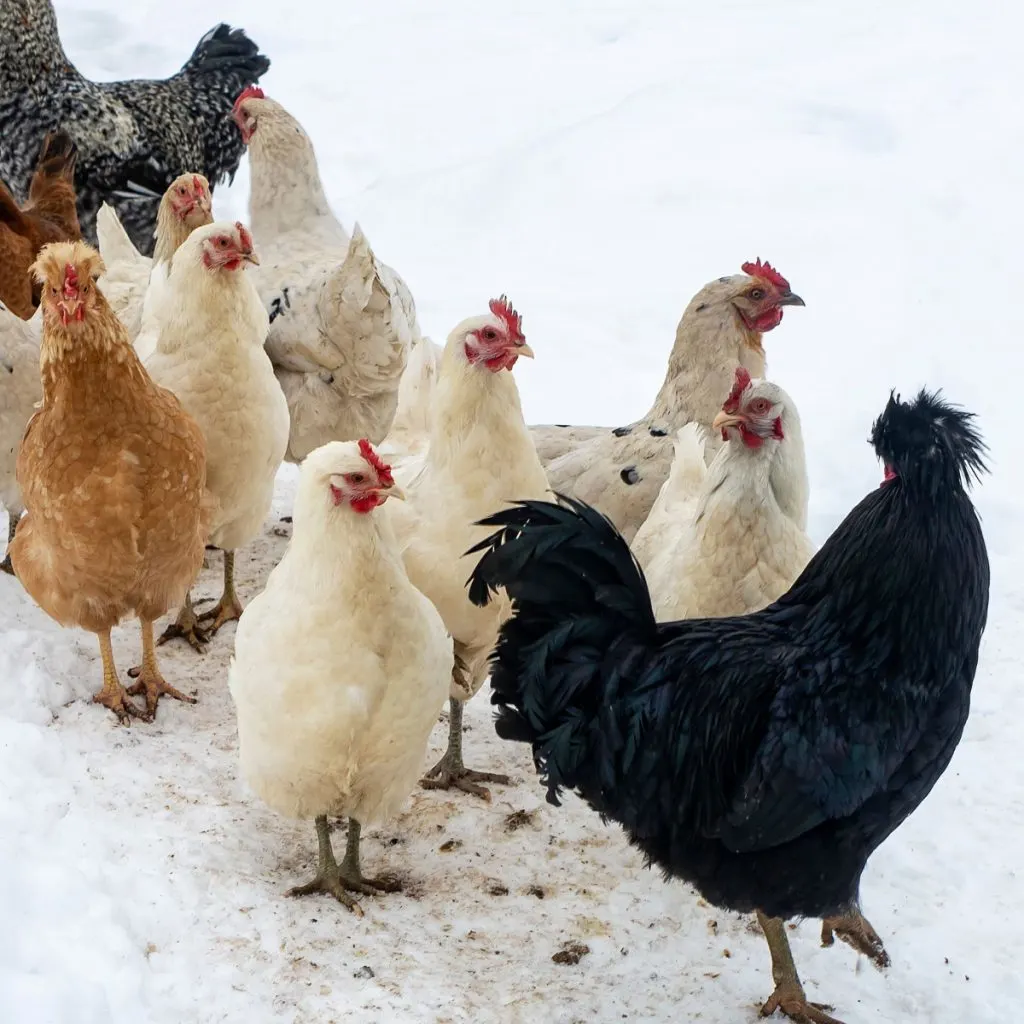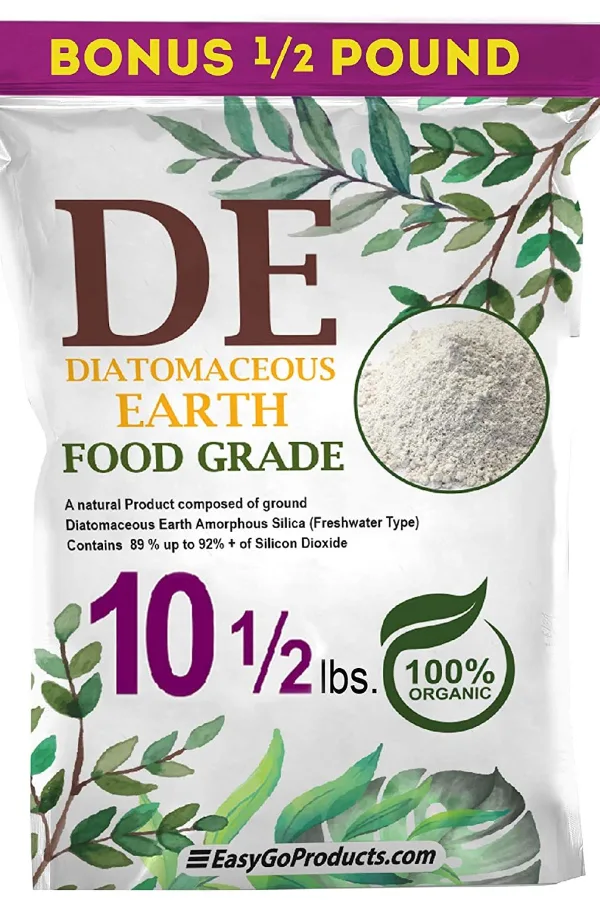Whether you are looking to cut down on feed expenses, give your chickens more of what they need, or just really wanting to know exactly what you are feeding your flock, making your own homemade chicken feed can be both fun, rewarding and budget friendly.
You might be surprised at how incredibly different homemade chicken feed can look from those compressed pellets you purchase at your local feed store. With its vibrant grains and veggies, homemade chicken feed is downright beautiful to the eye.
Even better, it can also offer your chickens more in nutritional value as well, allowing you the opportunity to easily increase or decrease supplements and minerals as needed. Best of all, buying grains and other ingredients in bulk can also be more cost effective than buying bags of pre-made food.
Making your own homemade chicken feed allows you the opportunity to create food with the specific energy and nutrients your chickens need to thrive.
With all of those advantages in mind, here is look at what goes into making great homemade chicken food to help you maintain your chickens’ health – and ensure that the eggs they lay for you are healthier and more nutritious than ever!
How To Make Your Own Homemade Chicken Feed
Creating A Balanced Chicken Feed
As with all living things, proper nutrition is important to a chicken’s overall health and well being. From maintaining a good coat of protective feathers, to keeping their organs functioning. But it also provides them with the proper energy they need to develop and produce beautiful, delicious, healthy eggs.
There are five main building blocks to a well-balanced chicken feed, including carbs, fats, proteins, minerals, and vitamins – and they all play an important role in a chicken’s health and well being.
Carbs are the largest portion of a chicken’s diet. These are used as a quick source of energy. Proteins are an important part of a chicken’s diet because they help with the development of the chicken’s body tissues (nerves, cartilage, muscle, skin, feathers, etc.).
Fats are a source of calories and help with fat soluble vitamin absorption (vitamins A,D,E,and K). Fats are also extremely important for helping chickens get through the cold months. Chickens burn fat to stay warm, and without enough in their diet, it can spell trouble for them in the winter.
Last but not least there are the vitamins and minerals. Vitamins, of course, play a critical role in growth, health and reproduction, while minerals help with muscle and nerve function and bone production.
Creating A Nutritious Feed For Your Chickens – How To Make Homemade Chicken Feed
One thing is certain, there is no one single perfect chicken food recipe. The real key to success when creating your own feed for your laying hens is to simply give them plenty of the carbs, proteins, fats, vitamins, and minerals that they need to thrive.
Below, we have listed a really good all-purpose feed recipe to create a balanced poultry feed that will help your hens stay healthy and produce great eggs. This recipe is great for your layers as well as the rest of your flock, but can easily be adjusted to fit your specific flock.

The important thing is to not get caught up in trying to be exact. In fact, the more simple you keep it, the better. There are so many variables to consider such as size of flock, availability and affordability of ingredients, and if your chickens have the ability to forage (free range, chicken tractor) for their food. If they can do this, the amount of feed will greatly be reduced.
As you go along, you will find out what homemade parts they love – and which they don’t. Because of this, you will be able to reduce waste and customize your mix to suit their needs. Of course, equally important is to always be sure to provide plenty of fresh, clean water
Common Homemade Chicken Feed Ingredients – How To Make Homemade Chicken Feed
As you will see below, a simple mix of the base ingredients will provide a good amount of protein and carbohydrates.
Here are some of the most common and beneficial homemade ingredients and what they will provide for your chickens. We also have a base recipe at the end of the article that is a great starting point. Again, it can be adjusted for what you can find available in your area.
- Wheat- A good source of carbs and protein
- Peas/Beans- Very high in protein
- Rye- source of carbs
- Oats- High in fiber and protein
- Corn- Contains carbs, fat, and some protein.
- Barley- High in fiber, low in energy. Should be no more than 20% of chicken’s diet
- Millet- Rich in iron and amino acids
- Black Oil Sunflower Seeds- High in protein and fat. Vitamin and mineral rich
Optional Supplementary Ingredients
Here is a look at some other additions that can also help boost up the nutritional value. You can add supplementary ingredients to your homemade chicken feed right when you feed your hens by simply sprinkling it on their feed.
- Flax Seed- Increases omega-3 fatty acid content of eggs. Use sparingly to avoid liver damage.
- Kelp (Seaweed)- High in iron and a good source of other minerals and vitamins. No more than 5 to 15 percent of chickens’ diet
- Garlic Powder- Thought of as one of nature’s best antibiotics. Garlic brings power to the immune system of your chickens and also boosts energy.
- Oregano- Also great for antiseptic and immune boosting properties
- Diatomaceous Earth (food grade)- Keeps bugs out of the feed. Thought of as a natural dewormer and also has grit properties. Product Affiliate Link: Food Grade Diatomaceous Earth
- Red Pepper Flakes- Boosts immunity and fights bacteria and parasites. Also improves blood circulation to prevent frostbite in winter.
- Crushed Oyster Shells (or Crushed Egg Shells)- Great sources of extra calcium, which is also essential for healthy egg production
Homemade Whole Grain Layer Feed Base Recipe
Here is a great homemade feed recipe that provides all of the nutrients your chickens will need. To make, simply add all ingredients together and mix well. As a good rule of thumb, you will use about 1/4 pound of feed per chicken, per day.
Ingredients
- 19 cups (9-10 pounds) split peas
- 14 cups (5-6 pounds) hard red wheat berries
- 12 cups (4-5 pounds) rye grain
- 10 cups (4-5 pounds) millet
- 8 cups (2-3 pounds) black oil sunflower seed
- 1/2 cup kelp meal
- 1/2 cup garlic powder
- 1/2 cup food grade diatomaceous earth
You should also provide grit for digestion (if your girls don’t free range) – this can be crushed oyster or egg shells that also help to add extra calcium.
Here is to making your own chicken feed this year and having healthy and happy chickens! If you are looking for information on how to keep your backyard flock safe through the cold winter months, see our article How To Protect Your Chickens From Winter – 3 Simple Secrets To Keep Chickens Safe!
Happy Gardening – Jim and Mary.
Old World Garden Farms
Jim and Mary Competti have been writing gardening, DIY and recipe articles and books for over 15 years from their 46 acre Ohio farm. The two are frequent speakers on all things gardening and love to travel in their spare time.
As always, feel free to email us at thefarm@owgarden.com with comments, questions, or to simply say hello! You can sign up for our free email list in the subscribe now box in the middle of this article. Follow us on Facebook here : OWG Facebook. This article may contain affiliate links.



